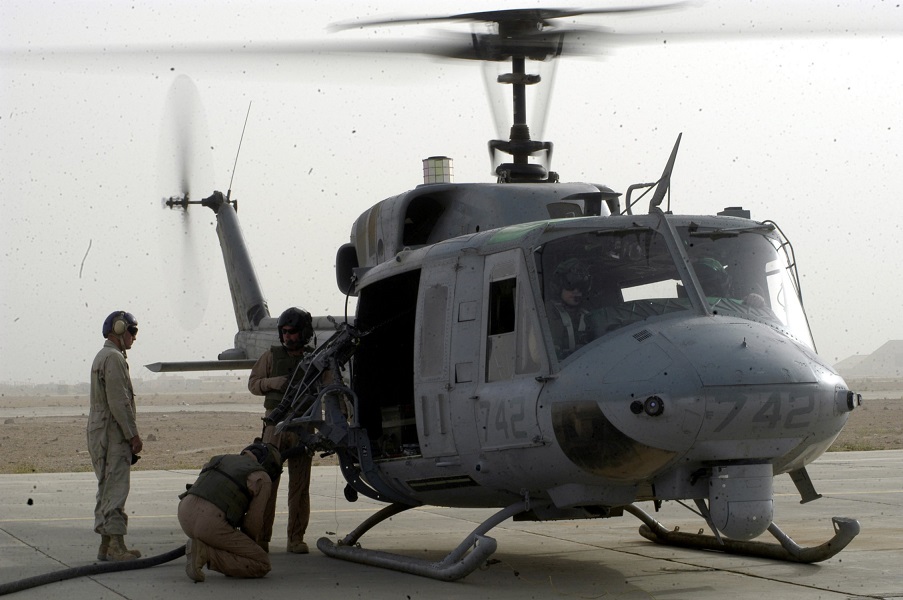This post is also available in:
 עברית (Hebrew)
עברית (Hebrew)
An autonomous helicopter system successfully demonstrated its re-supply capabilities. The UH-1H (AEH-1) helicopter was developed by Aurora Flight Sciences and the US Office of Naval Research’s (ONR) Autonomous Aerial Cargo Utility System (AACUS) program. The vehicle conducted multiple flights, showcasing its ability to autonomously execute re-supply missions in relevant and austere settings.
AACUS enables a Marine on the ground to request a supply delivery via helicopter from a handheld tablet, requiring no advanced training to operate the system. AEH-1 is fitted with onboard lidar and camera sensors that enable it to detect and avoid obstacles and evaluate the landing zone. The system processes this information to perform onboard mission, route, and path planning to enable autonomous mission execution, according to gsnmagazine.com.
This is the first demonstration in which the aircraft performed cargo and utility missions in an operationally-relevant training environment with Marine interaction. As part of the demonstration, Marines loaded supplies for the aircraft before clearing the autonomy system for autonomous takeoff.
“The Marines’ vision for the future of vertical lift operation and support is optionally-piloted aircraft,” said AACUS Program Manager Stephen Chisarik. “Aurora’s system enables any rotary-wing aircraft to detect and react to hazards in the flight path, and make appropriate adjustments to keep the aircraft safe.”
“We’ve developed this great capability ahead of requirements and it’s up to us to determine how to use it,” said Lt. Gen. Robert Walsh, commanding general, Marine Corps Combat Development Command. “The young Marines today have grown up in a tech-savvy society, which is an advantage. We’ve got to keep pushing and moving this technology forward.”
The AEH-1 was granted a Special Airworthiness Certificate by the Federal Aviation Administration (FAA) in October, allowing the aircraft to operate autonomously with only a safety pilot onboard to monitor the controls.

























